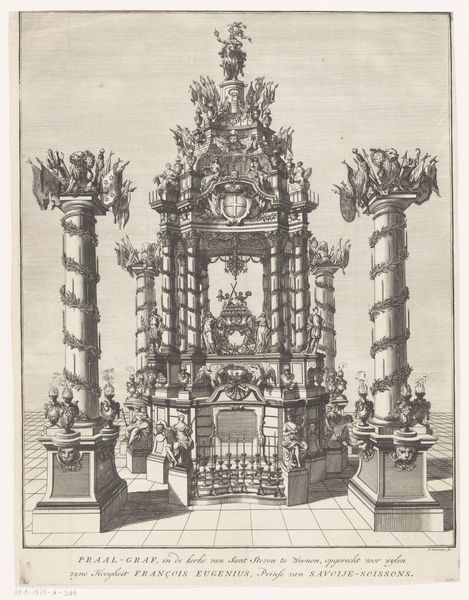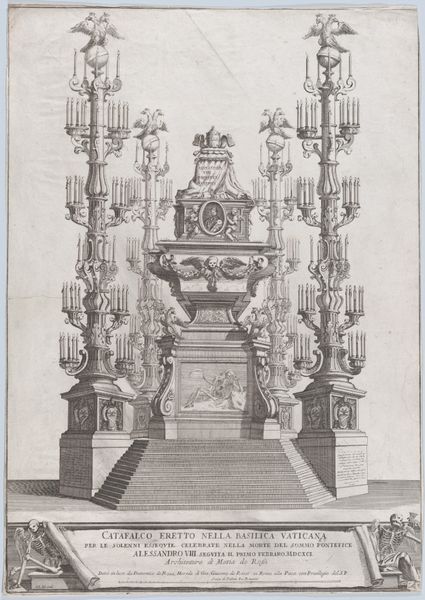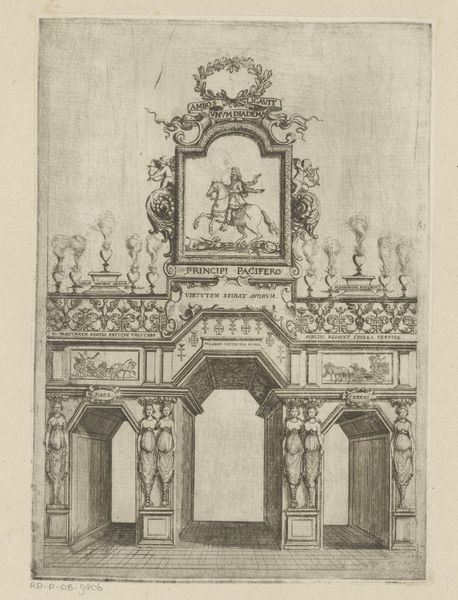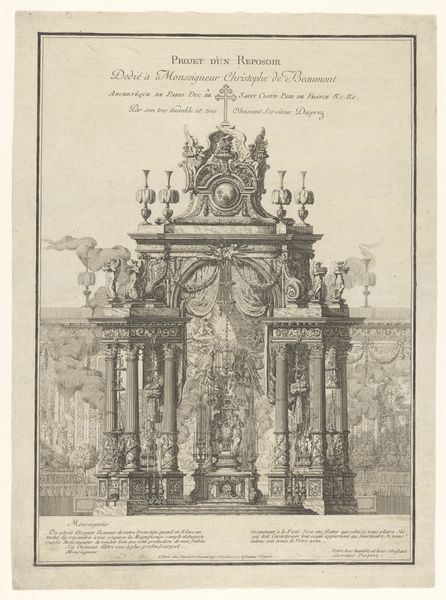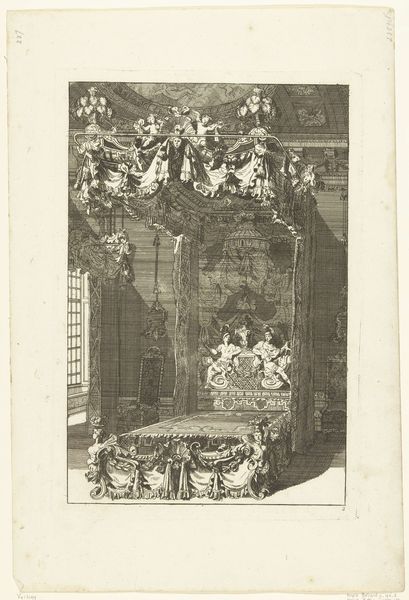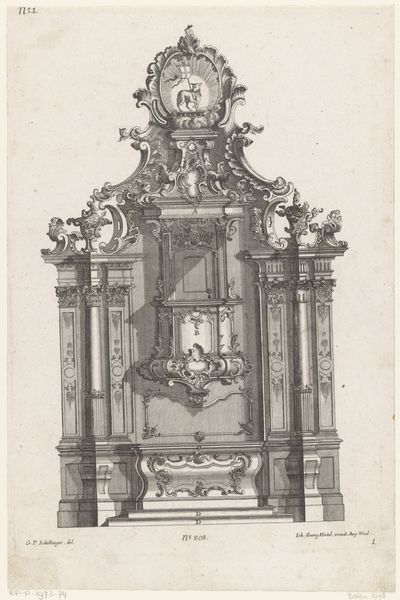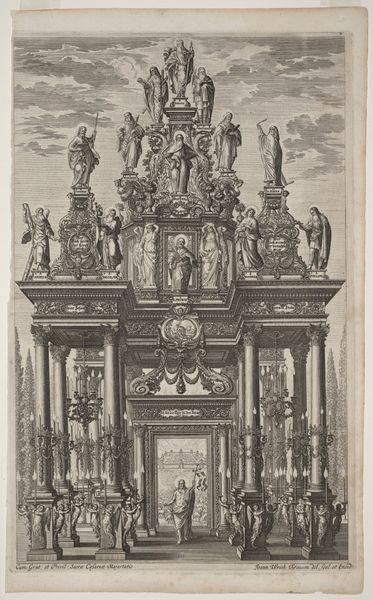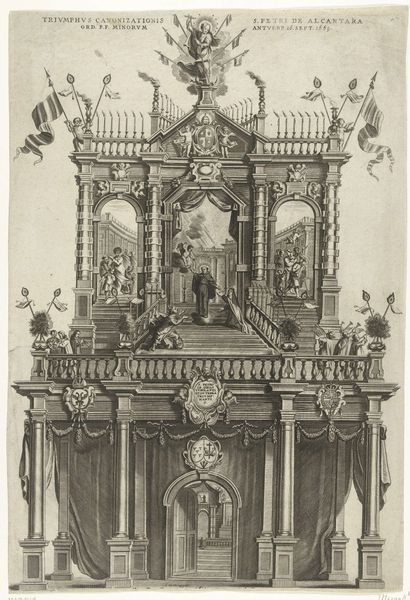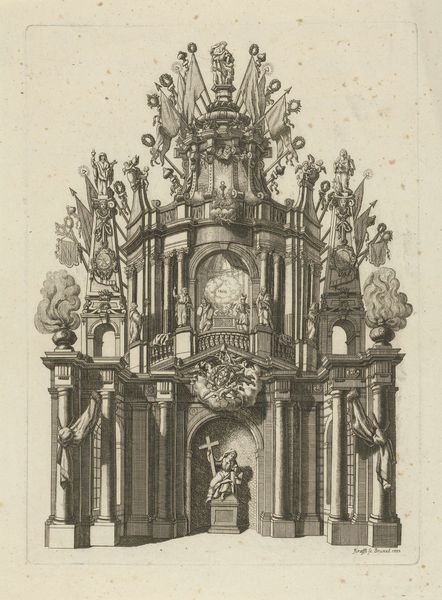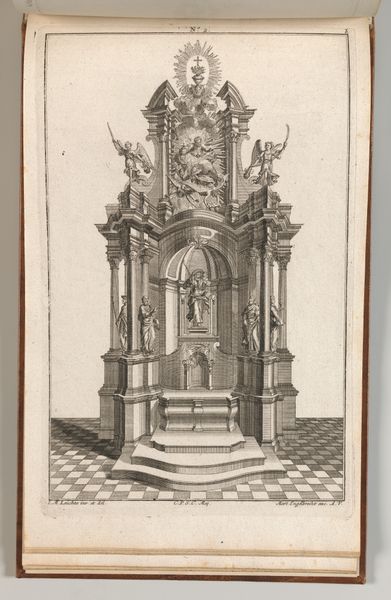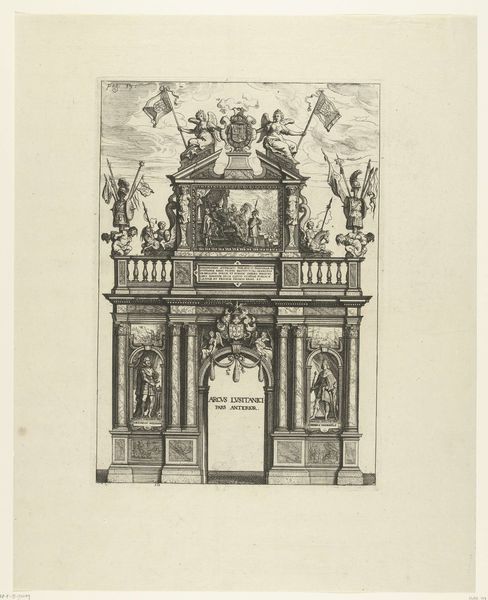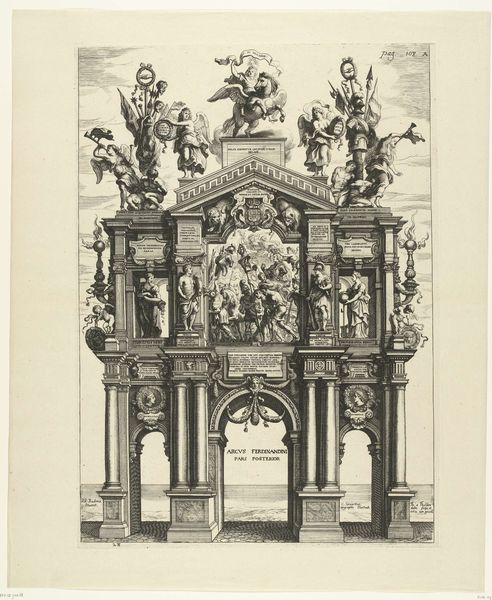
Dimensions: height 357 mm, width 261 mm
Copyright: Rijks Museum: Open Domain
This engraving shows a design for the tomb of Prince Eugene of Savoy, and was created by an anonymous artist in the 18th century. The image, held at the Rijksmuseum, reflects the grand, theatrical style of Baroque art, meant to impress and inspire awe. This imaginary tomb is adorned with classical columns, military trophies, and allegorical figures, all visual symbols of Eugene's power and accomplishments. The architectural fantasy reflects the desire to create a lasting monument that celebrates the achievements of a military hero, deeply embedded in the social and political context of its time. The tomb becomes a stage for performing power and solidifying the prince’s legacy. Historians might explore the social conventions surrounding death and commemoration in 18th-century Europe, consulting sources such as funeral orations, architectural plans, and biographical accounts. By understanding the social rituals and institutional practices around death, we can better appreciate the meanings that this image would have held.
Comments
No comments
Be the first to comment and join the conversation on the ultimate creative platform.
